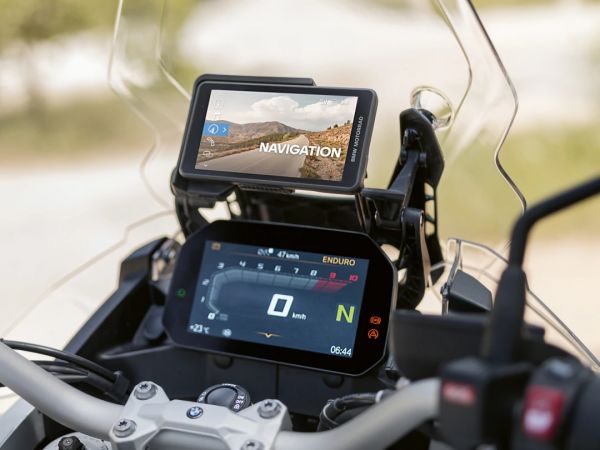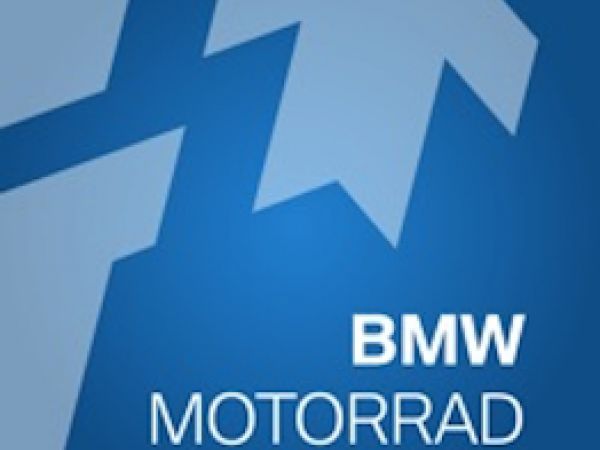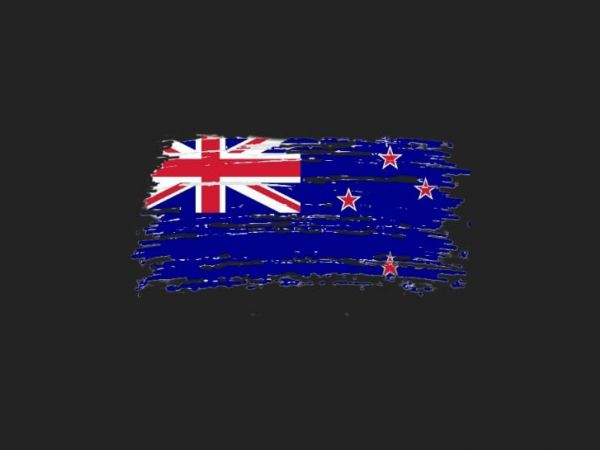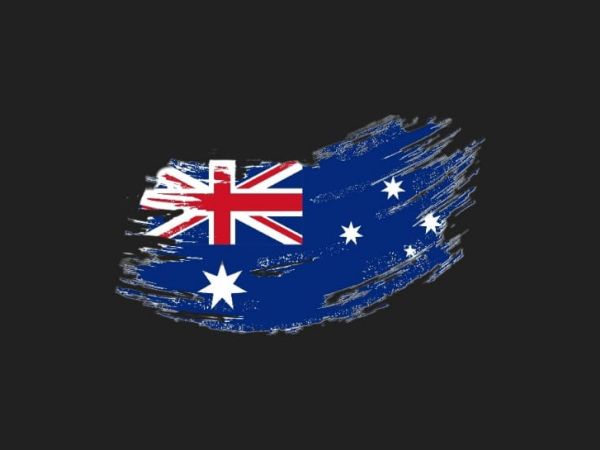Traffic regulations in Europe - Spain
Traffic regulations in Europe - Spain
Kategorija: Prometni propisi u Europi
What should be considered on a motorcycle tour to or through Spain? What documents do you need to bring with you? MotoGS WorldTours and MotoGS Rental provide you with answers to your most important questions.
Errors and omissions excepted - all information without guarantee.
Basics:
Spain is a member state of the EU and is located in southwestern Europe on the Iberian Peninsula. With an area of 504,645 square kilometers, it occupies six sevenths of the entire peninsula. The mountain ranges extend north (Cantabrian Mountains), north-east (Pyrenees and Iberian Mountains), in the middle (Iberian Mountains) and south (Betian Cordilleras).
The inland highlands are defined by the central Meseta Plateau and are traversed by fertile river valleys. The landscape is characterized by Mediterranean vegetation such as olive groves, citrus trees, pine forests and palm trees.
Language, currency and population:
Around 3.2 million of Spain's 47 million inhabitants live in the capital, Madrid. In addition to Spanish, the regional languages Catalan, Basque and Galician are spoken in different parts of the country. A lot of German and English is spoken in the tourist centers. However, outside of the tourist centers you will not get very far with a foreign language. At least basic knowledge of Spanish is more than advisable.
The currency in Spain is the Euro. Most restaurants and shops accept major credit cards. ATMs are common. If you are entering Spain with currencies other than the Euro, such as USD, AUD or whatever currency, then the Oanda site is a good indicator of the need for a currency exchange.
Documents, vehicle papers and other necessary documents for entry:
For a tourist stay for EU citizens, the identity card is perfectly sufficient. Of course, non-EU citizens must carry a passport.
All personal documents must be valid for at least 3 months upon departure.
As a rule, non-EU citizens can enter Spain without a visa. However, this also depends on the country of origin. Therefore, it makes sense for all non-EU citizens to find out about the entry requirements for Spain on the following VisaHQ website. This is for your own safety.
The vehicle registration document or the registration certificate part I is mandatory.
The IVK - International Insurance Card (formerly Green Card, including E) is valid as proof of liability insurance.
The EU driver's license is accepted in Spain, so you do not need to carry an international driver's license with you. For non-EU citizens, an international driving license is required in addition to the national driving license of the country of origin.
Whether an IDP (International Drivers Permit) is also required depends on your country of origin. It is therefore advisable to check whether an IDP is necessary in advance, depending on the country of origin. This can easily be done on the International Drivers Association website and if necessary an IDP can also be requested on this site.
With a rented motorbike to Spain:
Basically not a problem, but riders who make trips abroad with a vehicle that is not registered in their name should carry a user permit with them to be on the safe side.
This permit can be downloaded from the following link.
Requirements to be able to rent a motorcycle in Spain, you must be at least 18 years old (may vary depending on the motorcycle category and local rental company). As a rule, however, the rental stations require a minimum age of 23 years. For riders under 23, young rider surcharges are often required.
Health insurance:
In principle, all travelers to Spain, regardless of their country of origin, should take out international health insurance. This can also be done easily here via Global Rescue. Surely this type of insurance protection is a bit more expensive than other providers. However, as the name suggests, this type of coverage is built on Rescue. Therefore not comparable. However, this should not be understood as advertising, it is a simple recommendation.
Helmet obligation:
Helmets are compulsory in Spain! Only helmets that comply with the ECE R 22.05 standard are permitted.
If your helmet has a circled "E" somewhere and next to it a test number that starts with the digits "05", then your helmet meets this standard.
Violators face very high fines.
Speed limits in Spain:
In urban areas: 50 km/h
Out of town: 90 km/h
Expressways, roads with 2 lanes in each direction: 100 km/h
Motorway: 120 km/h
Lighting:
On motorways and outside built-up areas, dipped headlights (or alternatively daytime running lights) must be used all year round during the day. Motorbikes also in town.
Carrying a spare bulb set is recommended. Excluded are motorcycles equipped with LED lights.
First-aid-kit and warning vest:
Neither first-aid bags nor high-visibility vests are mandatory. However, it makes sense to always have both with you. A motorcycle warning triangle and warning light are also recommended.
Radar detectors:
Using AND carrying a radar warning device is strictly prohibited. Even using an app on your smartphone. Carrying a radar detector alone is a criminal offense under Spanish Traffic Law. Non-compliance can result in high fines and, of course, the confiscation of the device.
Alcohol determination:
There is an upper limit of 0.5‰ blood alcohol content for vehicle drivers and 0.3‰ blood alcohol content for drivers who have held their driving license for less than 2 years.
The same applies to motorcyclists.
Navigation device:
Operating a navigation device while riding is strictly prohibited. Unless it can be controlled directly via buttons and rotary switches, as is the case with BMW motorcycles, for example.
Toll obligation:
In contrast to many other countries in Europe, such as Switzerland and Austria, you do not need a vignette in Spain to pay the toll. Rather, you take a ticket when entering the motorway, as in France for example, and pay the ticket at one of the toll booths when you leave the motorway again.
The Spanish motorway network is operated by various companies and tolls are only charged on certain stretches. Expressways are free.
Tolls are usually collected on the privately operated Autopistas at tollbooths. The Autovías operated by the public sector, on the other hand, were previously free of charge. Since 2022, however, an electronic toll has been calculated in the free-flow system on the public A-636 in the Basque Country. On the 23 km long Basque Dekarga motorway A-636 between Beasain and Bergara, tolls have been collected electronically since 2022 using number plate recognition. For payment, the number plate must be registered in advance and linked to a bank card. Since motorcycles are exempt from paying the toll here, no further information is necessary at this point.
There is only one thing left to say, in the free-flow system more routes are to follow.
Toll-free urban motorways and city bypasses exist in all major cities, such as Barcelona, Bilbao, Valencia and Alicante. The motorway ring around Madrid is partly subject to tolls.
The toll also depends on the time of day, week or public holidays.
Most motorway companies differentiate between the vehicle categories "ligeros" and "pesados":
Ligeros: Motorbikes with or without a sidecar.
Pesados 1: Vehicles with up to 3 axles with dual tires (e.g. passenger cars with trailers with dual tires, mobile homes with dual tires).
Pesados 2: Vehicles with 4 or more axles (e.g. cars with 2 or more axle trailers, of which at least 1 axle has twin tires).
On some sections you pay a flat fee at the toll station, regardless of the route to be ridden or the route already ridden. A ticket does not have to be drawn in these cases. In a few sections you throw the counted money into a funnel. The amount will be displayed in time.
You can pay anywhere with cash or with the most common international credit cards (e.g. VISA or Mastercard). Prepaid credit cards and bank cards (Maestro or V-Pay symbol) are not accepted for payment.
You can pay by credit card at the "vias automáticas" lanes specially reserved for card payments. First insert the ticket and then the credit card (magnetic stripe bottom right) into the machine. You will receive a receipt at the touch of a button.
The payment points marked "Télépéaje", "VIA-T" or just "T" are reserved for drivers who have a transponder with a corresponding fee-based contract.
Special features in road traffic and fines:
The penalties for traffic offences, including those for not following police instructions, are considerably higher than in many other European countries.
Overtaking is prohibited 100 m before hilltops and on roads that are not at least 200 m visible.
In Spain, road traffic offenses (infracciones) are divided into three categories, namely minor (leve), serious (grave) and very serious (muy grave).
Fines and penalties for alcohol or speed offenders are high, and in the case of serious violations of the rules, even tourists' driving licenses can be confiscated. Wrong parkers also have to reckon with hefty fines.
There is no obligation to pay imposed fines (multas) directly. However, if you pay immediately or within 20 days, you will receive a 50% discount. In this case, however, all rights of objection are waived, which means that the procedure is ended directly.
You can pay directly to the security officer who issues the fine, by credit card or cash, by credit card at the Jefatura de Tráfico Tourist Office, on the DGT website or at any CAIXABANK branch.
In the case of traffic offenders not resident in Spain, the amount of the fine can be provisionally determined (security deposit for foreign traffic offenders, Art. 67 Para. 4 LSV). Payment on site can be made in cash or by credit card. Here, too, a 50% discount must be offered if the fine is willing to be paid. If the person concerned cannot or does not want to pay the security deposit, it must be expected that the vehicle will be secured.
From a fine of 70 euros or more, in accordance with EU Directive 2011/82 of October 25, 2011 "to facilitate the cross-border exchange of information on road safety-endangering traffic offenses", non-payment will result in enforcement proceedings in the home country, which will continue up to imprisonment.
You have to change lanes when overtaking cyclists and mopeds on two-lane roads, and keep a distance of 1.50 meters on single-lane roads.
Pedestrians ALWAYS have priority over vehicles at INTERSECTIONS, on sidewalks and in pedestrian areas.
In the roundabout, vehicles driving in the roundabout have the right of way - unless otherwise specified by signs.
Yellow markings at the edge of the road stand for an absolute parking ban.
Blue markings indicate paid and time-limited parking zones.
Green or orange markings mean resident parking.
White markings are free parking spaces.
Motorbike parking spaces are often marked with MOTOS or MOTOCICLETA.
Correct behavior in the event of an accident or breakdown:
Accidents involving personal injury must be reported to the police immediately. If there is property damage, it is also recommended to use the "European Accident Report".
Important to know, environmental zones in Spain:
There are currently 5 environmental zones in Spain. The environmental zones exist in Madrid, Barcelona, Seville, Valencia and Valladolid. Only the zone in Barcelona is permanently valid. The other zones are weather-related air protection zones and are only activated in the event of severe air pollution. Which vehicles are then prohibited is not generally specified. Depending on the level of air pollution, the government decides which vehicles are still allowed to enter.
The permanent zone in Barcelona is active from Monday to Friday from 7 a.m. to 8 p.m. The rules of the environmental zone refer to the vehicle type as well as to the Euro standard and the vehicle's fuel. For example, motorcycles and mopeds, for example category L vehicles, need at least Euro 2 standard. Diesel cars are only allowed to enter from Euro 4 standard, while petrol engines are still allowed with Euro 3. Different regulations apply to buses and trucks. To ensure vehicle identification, Spanish vehicles need a sticker. Non-Spanish vehicles, on the other hand, cannot get a sticker, instead they need to be registered in order to be allowed to enter. Applying for a sticker takes a little longer because it has to be issued by the Spanish authorities. The sticker is then valid indefinitely as long as the number plate does not change or the sticker is damaged. Registration for foreign vehicles is electronic and can therefore be completed within a few working days. The registration is then valid for 2 years.
In Madrid, a permanent environmental zone was only recently abolished due to legal deficiencies, and a new one is already being planned.
If you want to find out more about the exact regulations in the Spanish environmental zones, go to Green-Zones-EU or simply download the Green-Zones app. You can also register your motorcycle in the Green-Zones-EU online shop.
The emergency call in Spain:
The uniform emergency number is 112
Ambulance: 061 or 112
As of 07/13/2023

TAGS
valencia pyrenees mountains meseta plateau madrid jefatura de tráfico tourist office iberian peninsula iberian mountains green-zones-eu online shop galician catalan cantabrian mountains bilbao betian cordilleras beasain and bergara basque dekarga motorway basque barcelona autovías autopistas alicantePodijeli svoje mišljenje
Podijeli svoja iskustva, pitanja ili prijedloge!
Komentari drugih motorista
Još nitko nije komentirao – što ti misliš?
Blog kategorije
Moto Ture

* Balkan-Italija Moto Avantura
Otprilike 3750 km!
14 dana putovanja kroz 5 zemalja!
15 noćenja + 2 noćenja na trajektu!

* Balkan-Karpati-Albanske Alpe Moto Avantura 2
Otprilike 5050 km!
21 dana putovanja kroz 7 zemalja!
27 noćenja!

* Balkan-Rumunjska Moto Avantura
Otprilike 3500 km!
11 dana putovanja kroz 5 zemalja!
12 noćenja!

* Balkan-Karpati-Albanske Alpe Moto Avantura 1
Otprilike 4055 km!
15 dana putovanja kroz 7 zemalja!
18 noćenja!

* Hrvatska-Italija-Francuska Moto Avantura
Otprilike 3550 km!
15 dana putovanja kroz 4 zemalja!
17 noćenja + 1 noćenje na trajektu!

* Hrvatska-Sicilija-Amalfijska Moto Avantura
Otprilike 4390 km!
18 dana putovanja kroz 3 zemalja + Sicilija !
21 noćenja + 1 noćenje na trajektu!

* Novi Zeland Moto Avantura
Otprilike 6650 km!
20 dana vožnje kroz Južne i Sjeverne otoke!
24 noći + 1 noć na kruzeru!

Croatia - Route des Grandes Alpes, July 2025
2 Americans - 1 boy and 1 girl, 1 motorcycle - a BMW R1250GS, one motorcycle tour and one goal ...

Balkans - Romania Tour, June 2025
At the end of June 2025, the time had finally come. Between June 23 and June 25, all participants in this tour gradually arrived in Trogir.

Balkans - Italy Tour, May 2025
Together we covered about 3700 km, crossing the Adriatic twice, from Durrës to Bari and from Ancona to Split.

Money protection in the event of insolvency
Money Protection Certificate according to § 651r and § 651w of the Civil Code of the Federal Republic of Germany ...

Packing list for a motorcycle tour
Pack your things and get going...

Travel planning and navigation
The next vacation is just around the corner, hopefully, and you've decided to finally ...

Riding a motorcycle in a group or alone?
Riding a motorcycle in a group or riding alone? Are you worried about safety, contact with other people ...

The International Driving Permit
Understanding the International Driving Permit (IDP). A Key to Smooth Overseas Riding for ...

BMW Motorcycle ConnectedRide Navigator
The new BMW Motorcycle ConnectedRide Navigator ...

BMW-ConnectedRide Cradle and Connected App
Riders of new BMW models have several options for using information and entertainment ...

Traffic regulations in Oceania - New Zealand
What should be considered on a motorcycle tour through New Zealand?

Traffic regulations in Oceania - Australia
What should be considered on a motorcycle tour through Australia?

